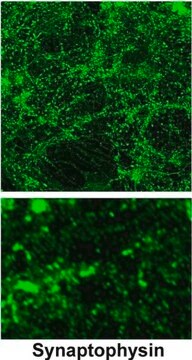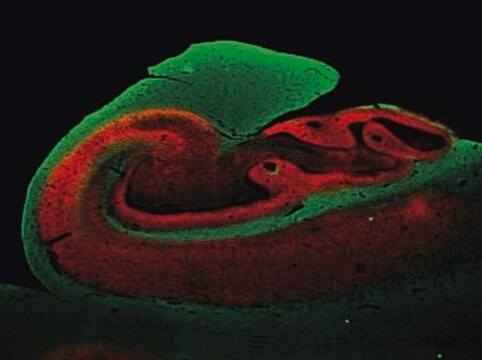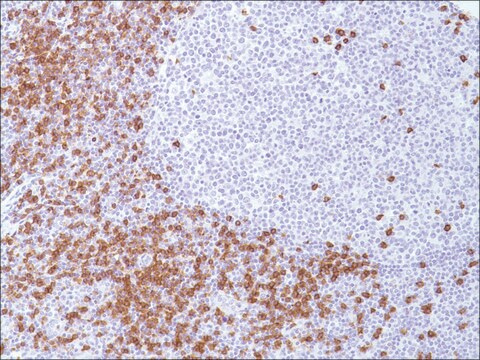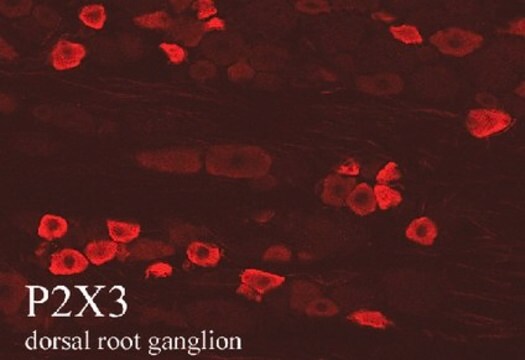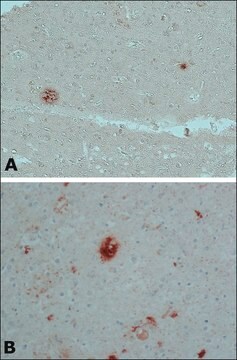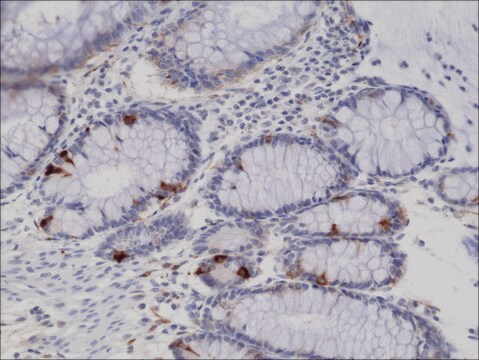SAB4200544
Anti-Synaptophysin antibody, Mouse monoclonal
clone SVP-38, purified from hybridoma cell culture
Sinónimos:
Monoclonal Anti-MRXSYP, Monoclonal Anti-SYP, Monoclonal Anti-Synaptophysin1, Monoclonal Anti-Synaptoporin, Monoclonal Anti-Syp1, Monoclonal Anti-p38
About This Item
Productos recomendados
biological source
mouse
Quality Level
conjugate
unconjugated
antibody form
purified immunoglobulin
antibody product type
primary antibodies
clone
SVP-38, monoclonal
form
buffered aqueous solution
mol wt
antigen 38 kDa
species reactivity
rat, human
concentration
~1.0 mg/mL
technique(s)
immunohistochemistry: 10-20 μg/mL using formalin-fixed paraffin embedded rat cerebellum.
indirect immunofluorescence: 10-20 μg/mL using B35 cells.
western blot: 1-2 μg/mL using newborn rat brain extracts.
isotype
IgG1
shipped in
dry ice
storage temp.
−20°C
target post-translational modification
unmodified
Gene Information
human ... SYP(6855)
General description
Specificity
Immunogen
Application
- Immunoblotting
- Immunohistochemistry
- Immunofluorescence
Biochem/physiol Actions
Physical form
Disclaimer
¿No encuentra el producto adecuado?
Pruebe nuestro Herramienta de selección de productos.
Optional
Storage Class
10 - Combustible liquids
flash_point_f
Not applicable
flash_point_c
Not applicable
Elija entre una de las versiones más recientes:
¿Ya tiene este producto?
Encuentre la documentación para los productos que ha comprado recientemente en la Biblioteca de documentos.
Nuestro equipo de científicos tiene experiencia en todas las áreas de investigación: Ciencias de la vida, Ciencia de los materiales, Síntesis química, Cromatografía, Analítica y muchas otras.
Póngase en contacto con el Servicio técnico

